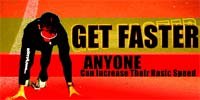Downingtown West High School Class of 2021
Long Jumper and Triple Jumper
Triple Jump PR 32' 1" -Germantown Academy 6/26/18
Long Jump PR 14' 3" - Bishop Shanahan 4/8/18
Coaches and Recruiters: Please contact the Downingtown West High School Track and Field Coach to contact this student-athlete
Coaches and Recruiters: Please contact the Downingtown West High School Track and Field Coach to contact this student-athlete
Presented on US Sports Net by Game Planner Pro!
Enter Code USSports to save 10% off the annual subscription. For Football Coaches, By Football Coaches Learn More...
Enter Code USSports to save 10% off the annual subscription. For Football Coaches, By Football Coaches Learn More...
What Is The Best Diet For A Track Athlete? From Bodybuilding.com
What is the best diet for a track athlete? Find out what other people from the message boards think ...

TOPIC: What Is The Best Diet For A Track Athlete?

The Question:
Track athletes have a different type of workout because they rely on speed, strength and power. However the workout is not the single most important aspect of the sport. Diet comes into play and can greatly affect the performance of an athlete, even if they have the best form and technique.
What is the best diet for a track athlete (sprinters, long distance runners, jumpers, hurdlers, etc.)? Why? Please be as descriptive as possible. Give examples of what foods to eat, when to eat them, etc ...
What part of the diet will a track athlete need to change when a competition is coming up? What is the best pre-competition meal to increase performance?
Bonus Question: When should an athlete start carb loading when a competition is nearing?
Show off your knowledge to the world!
The Winners:
- Backa53 View Profile
Prizes:
- 1st place - 75 in store credit.

1st Place - Ben "Backa53" Halpern
How To Eat For Speed

Diet and Nutrition can be risky business when dealing with Track and Field athletes. A sprinter's goal is always known as: run as fast as possible. It's not that simple to optimize your body's speed potential.
In sports like football, athletes are advised to carry some bodyfat in their bodies as they compete. Football is a high collision sport with extreme risk of joint injury. Fat surrounding joints helps prevent injury in football. The sport also revolves around much more than simple speed.
 To View Top Selling Joint Suppert Products Click Here.
To View Top Selling Joint Suppert Products Click Here.
Athletes must be as strong as possible and for the most part carry as much bodyweight as possible, even if that means adding some fat and thus losing some speed.
Sprinters spend only a small portion of a race with contact to the track. Most of the time is spent in the air, with no contact to the earth. This means that when they pound the track, they need to exert as much power and force as possible, in order to maintain high speeds while in the air.
This mean's they must be as strong as possible. Strength comes much easier when an athlete is allowed to gain as much weight and fat as possible, however, when the athlete must be as lean as possible as well, this may become difficult.

Runners & Jumpers

It is always crucial that athletes eat as clean as possible. Not all fats are created equal and the more natural a food is for the most part, the better for you it is. As long as what you eat is healthy, the macronutrients involved is not that big a deal.
Your diet should consist of about half to two thirds carbohydrates and about a 2:1 ratio of protein to quality fats. How you eat is less important than how much you eat for the most part.
 In Season:
In Season:
Sprinters have extremely tasking daily workouts and must also peak for meets. In order to have enough energy for training sessions while still maintaining a low bodyfat percentage, I suggest loading complex carbs before your sessions, while after a workout and throughout the day, eat meals that are higher in protein.
Try to achieve enough calories to have the energy to compete, but not so many that you put on extra weight.
 Off Season:
Off Season:
In the off season, take the approach that you will accept that you may gain some fat if it means becoming more powerful. Extra calories will help you train harder, get stronger and more powerful and ultimately, become faster. Cut the calories prior to the start of track season to obtain the optimum lean body for running.

Throwers

Throwers naturally should have an easier time with the nutritional aspect of track and field.
With the goal to exert the force necessary to launch an object as far as possible, weight is a good thing and it will help an athlete in their goals.
Javelin throwers must stay lean while having great total body strength to send the javelin flying through the air.
They must find a balance between throwing and sprinting.

General

Pre-competition meals are not an exact science. An athlete must learn on their own when they feel best eating and what they should eat. It is trial and error. Obviously load up with good carbs the morning of the competition. As your event approaches, don't fill up and get stuffed. Eat smaller and lighter snacks as you near the big moment.
I hope I have helped you figure out how you should eat if you want to give Asafa Powell a run for his money. Good luck with all your nutrition and track competitions!
 Asafa Powell:
Asafa Powell:Asafa Powell (born 11 November 1982) is a Jamaican sprinter and the current 100 m world record holder.
One of the gold medal favorites for 2004 Olympic 100 m (after clocking sub-10 second times a record-equalling 9 times in a season), Powell finished a disappointing fifth in the Athens final. However, he gained some consolation by breaking the 100 m world record, in Athens again, on June 14, 2005, setting a time of 9.77 s. This beat American Tim Montgomery's 2002 record of 9.78 s by just one one-hundredth of a second. Coincidentally, Powell achieved the feat on the same track as Maurice Greene's 1999 world record of 9.79 s. Wind assistance for Powell was measured at 1.6 m/s - a gentle breeze - within the IAAF legal limit of 2.0 m/s.
Asafa Powell was going to be an electrical engineer before he decided to start running. His elder brother Donovan Powell was a 100 m semi-finalist in the 1999 world championships.








